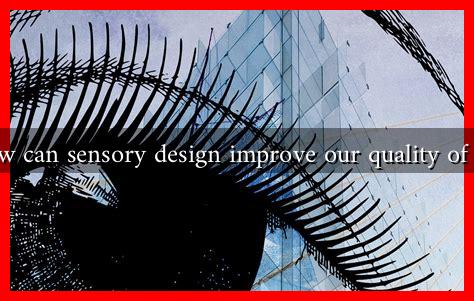-
Table of Contents
How Can Sensory Design Improve Our Quality of Life?
Sensory design is an innovative approach that focuses on creating environments and products that engage our senses—sight, sound, touch, taste, and smell. By understanding how these senses interact with our surroundings, designers can enhance our experiences, improve well-being, and ultimately elevate our quality of life. This article explores the principles of sensory design, its applications, and the profound impact it can have on our daily lives.
The Principles of Sensory Design
At its core, sensory design is about creating spaces and products that resonate with human perception. The principles of sensory design can be summarized as follows:
- Multisensory Engagement: Engaging multiple senses simultaneously can create a more immersive experience.
- Contextual Relevance: Design should consider the context in which it will be experienced, including cultural and environmental factors.
- Emotional Resonance: Effective sensory design evokes emotions, fostering a deeper connection between the user and the environment.
- Accessibility: Sensory design should be inclusive, catering to individuals with varying sensory abilities.
Applications of Sensory Design
Sensory design can be applied across various fields, including architecture, urban planning, product design, and healthcare. Here are some notable examples:
1. Architecture and Urban Planning
In urban environments, sensory design can transform public spaces into vibrant, engaging areas. For instance, the High Line in New York City is a prime example of how sensory elements—such as greenery, art installations, and varied textures—can enhance the urban experience. Studies have shown that such spaces can reduce stress and promote social interaction, leading to improved mental health outcomes.
2. Product Design
In product design, sensory elements can significantly influence consumer behavior. For example, the use of tactile materials in packaging can enhance the perceived value of a product. A study by the Journal of Consumer Research found that products with textured surfaces were rated higher in quality compared to smooth-surfaced counterparts. This demonstrates how sensory design can impact purchasing decisions and brand loyalty.
3. Healthcare Environments
In healthcare settings, sensory design plays a crucial role in patient recovery. Hospitals that incorporate natural light, soothing colors, and calming sounds have been shown to reduce anxiety and improve patient outcomes. A study published in the Journal of Environmental Psychology found that patients in well-designed environments experienced shorter recovery times and reported higher satisfaction levels.
Case Studies and Statistics
Several case studies highlight the effectiveness of sensory design in improving quality of life:
- The Eden Alternative: This approach to elder care emphasizes sensory engagement through nature, animals, and social interaction. Facilities implementing this model have reported a 50% reduction in the use of antipsychotic medications among residents.
- Google’s Office Design: Google’s offices are designed to stimulate creativity and collaboration through sensory elements like open spaces, varied textures, and vibrant colors. Employee satisfaction surveys indicate that these design choices contribute to higher productivity and job satisfaction.
- Soundscapes in Urban Areas: Cities like Copenhagen have implemented soundscapes—carefully curated audio environments—to enhance public spaces. Research shows that these soundscapes can reduce noise pollution and improve the overall quality of life for residents.
Conclusion
Sensory design is a powerful tool that can significantly enhance our quality of life by creating environments that engage our senses and foster emotional connections. From urban planning to healthcare and product design, the principles of sensory design can be applied in various contexts to improve well-being and satisfaction. As we continue to explore the potential of sensory design, it is essential to prioritize inclusivity and accessibility, ensuring that everyone can benefit from these innovative approaches. By embracing sensory design, we can create a more harmonious and enriching world for all.
For further reading on sensory design and its impact, consider exploring resources from the Sensory Design Network.


